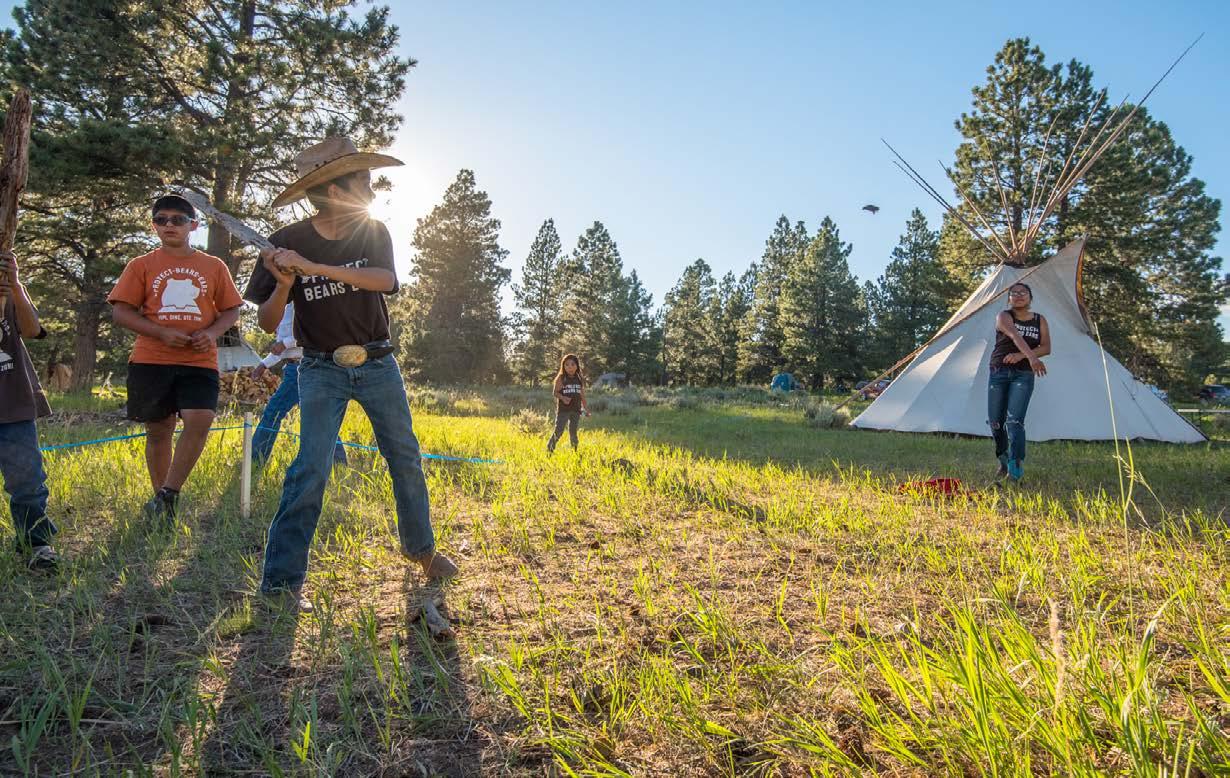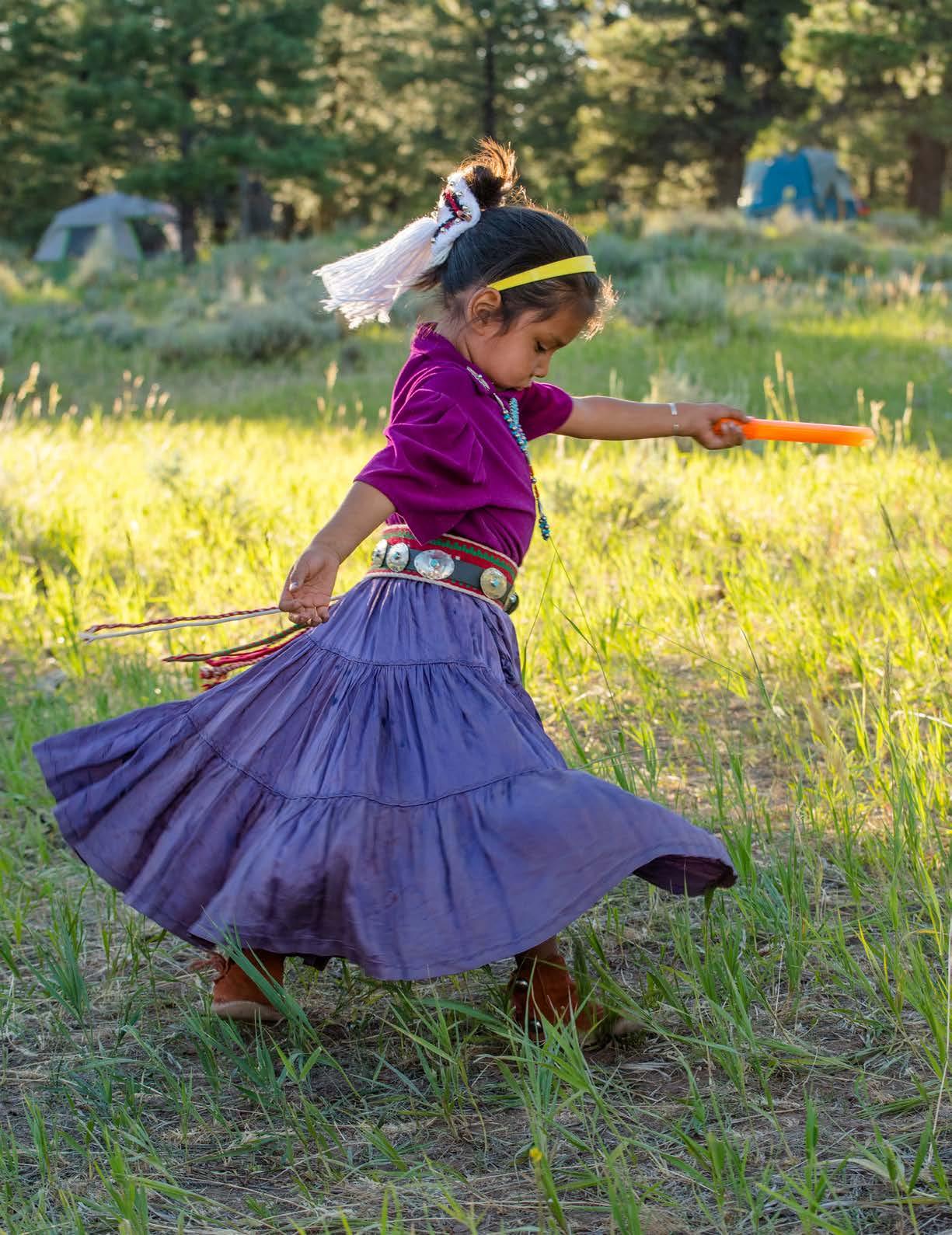
5 minute read
THE ROLE OF NATIVE-LED NGOS AND MOVEMENTS
Native people on the Colorado Plateau often face the preconception that tribal governments hold full responsibility for shifting narratives, building sustainable economies, and advancing cultural precepts. While tribal governments occupy a critically important role across the Colorado Plateau and across Indian Country generally, Native-led NGOs, nonprofits, and grassroots movements play an increasingly visible, additive, and complementary role in modern Native movement-building. For Native people on the Plateau, this work often grows directly from a community or culturally-identified need that a tribal government or federal government agency is not addressing, either due to a capacity gap or differing priorities.
Through my work with those organizations and connections with the people in those places, I was able to see a larger movement, which is both political and cultural. And I’ve always thought of this as cultural sovereignty. Even when the lands are not within the control of a given tribal government, there’s still a cultural form of sovereignty that is exerted…even where they don’t have jurisdiction over that land as a political entity, yet they maintain a cultural form of sovereignty as they say what is appropriate or not appropriate for development of that site. The language of cultural sovereignty is very important. Cultural sovereignty is not an unbounded thing, it really has to be rooted in something much more ancient, deeper, the knowledge, the epistemologies that Indigenous peoples have. Today, the new Native-led movements are very interesting to me because they often evoke that cultural sovereignty.
– Rebecca Tsosie
I think nonprofits help fill a void. They really help. They help in that capacity work because again, we can’t be everywhere. The tribal employee can’t be everywhere that they need to be. They can’t always say what they want sometimes or be that pres- ence there. So I think nonprofits, whether they’re tribally formed and led, or outside of working with Tribes, I think they help really fill that space and give us different avenues in which to advocate for ourselves. And I think it is self-empowering.
– Lyle Balenquah
And I often think about this, working for a tribal government, wondering if we could do everything that we want to do. And if we had all the resources that we needed, would we really need anyone else, any other groups helping us? And one answer is, obviously, we don’t have everything we need. Sometimes other entities get that and they can fill in that void. But there may be other reasons, even when Tribes do have the resources and the desire, that is sometimes politics or other governmental bureaucracy, things that go along with any government, sometimes can stand in the way and either prevent things from happening or make those things happen at a much slower rate or with lots of strings attached that make it less productive or less attractive. Sometimes just being a government, by its nature, does have some inherent factors that may make an effort not as successful as having a non-government entity doing it or, or helping with it or facilitate it….And with the government status, even community members can have some attitude or mindset towards the government, even to the extreme of not trusting them. Especially in tribal commu- nities that, you know, there, there is some mistrust with federal government, right? And then sometimes that extends to their own tribal government and sometimes in an even more personal negative way because sometimes they have more experience with their own tribal governments than they do with the federal government. And sometimes if those don’t have a good outcome, that can then lead to an ongoing aversion to wanting to deal with the tribal government. So, sometimes having a tribal government lead an effort or want to help the community will be a nonstarter for some community members. And having another entity do the same thing might have more doors open and more welcoming input….And finally, so many other people in the community want to help, but they can’t work for the tribal government, but they find other ways to get money and start their own groups to help. And just having that possibility and opportunity is useful….It’s always going to be helpful to create new opportunities and new ways.
– Kirk Bemis
The world that we’re talking about is one where cultural sovereignty can be exerted through non-governmental organizations, expanding the range of alternatives and providing a powerful interface with tribal political sovereignty....So the model that we’re talking about, blending cultural and political sovereignty together offers the opportunity to think about that collectively into the future.
– Rebecca Tsosie
Interviewees also commented on the inherent tension caused by the influence of federal funding on tribal government programming and priorities, as well as the variability of federal budgeting depending on the tenor of the current administration toward issues in Indian Country.
This is an era where the success of what a tribal government can do in and of itself within a federal framework is going to have natural limitations because of the politics. And I think that you see that in this administration, the availability of funding, the willingness of federal agencies to do something or not do something, everything in that federal system is conditional. And so as long as you’re in that conditional environment, that means if you have a friendly administration, you’re good to go on the renewable energy projects for two years, then the administration changes and then all bets are off. You can’t get it done. It’s not going to be renewed. Somebody else was in charge. And that is not a sustainable model for any government. But for tribal governments particularly, because history tells us that the challenges that tribal governments have faced have been directly related to the shifting pendulum of federal policy and what the federal government wants from Tribes.
– Rebecca Tsosie
So if you have a nonprofit that’s supporting workers or industries in a certain way in, let’s say workforce development, that’s a federally funded program that has never been able to be that successful or to reach these people. And the reason why is because there’s always this influence within tribal policy that comes from the federal government. And you can’t get away from that if you have a federally funded program. Those programs are doing what the federal government wants the Tribes to do, not necessarily what might be good for the people. I think that people are starting to realize that. And so with nonprofits and Native entrepreneurs finding their own resources, I think that’s been really important to uplift voices that have always been there, but really do have a connection with their community. And that is able to make an impact that’s going to be much greater than what the tribal government will be able to do.
– Jessica Stago
Native nonprofits and grassroots movements across the Plateau are responding to community needs by growing vibrant, culturally-grounded work to protect water, sustain Native languages, protect ancestral homelands and sacred places, and to advance food security through community-based sustainable agriculture. We now turn to listen to the voices of the Native leaders building and uplifting the work in these four key areas.
ROLE OF NATIVE-LED NGOS AND MOVEMENTS









